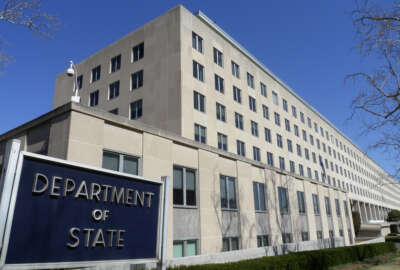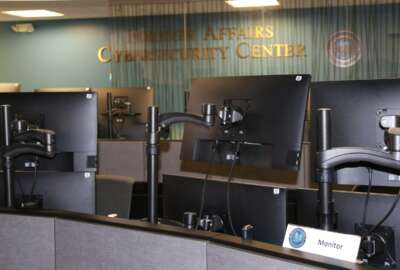

The State Department is looking at data analytics to more effectively buy the IT systems and services it needs to modernize.
The State Department, already focused on making data the driving force behind its day-to-day diplomatic mission, is looking at data analytics to more effectively buy the IT systems and services it needs to modernize.
Jaime Gracia, the State Department’s director of strategic enterprise programs, said the department is looking at data insights to factor into its IT and contracting decision-making.
Gracia said on Dec. 6 at an ACT-IAC Federal Insights Exchange event that the State Department, with a better handle on its data, will be able to buy more efficiently and ensure that small, disadvantaged businesses have sufficient opportunities to do business with the agency.
“We’re really taking a look at everything through a data lens. It’s a difficult exercise, as you can imagine, on really where to start, but it’s about where can we get the best [return on investment]. There is quite a bit of low-hanging fruit,” Gracia said.
Data-driven insights into the State Department’s procurement data, he added, will help contracting officers determine when the department should set up its own acquisition vehicles, and it should rely on existing governmentwide acquisition contracts.
“That really requires us to look more internally at how we buy [and] what we’re buying,” Gracia said.
The department is looking to modernize the way it does business with the federal contracting community ahead of a major IT services contract.
The agency recently released its final request for proposals for Evolve, a six-and-a-half-year, multiple-award contract with a $10 billion ceiling.
The State Department is asking vendors to provide services across five functional categories, including cloud and data centers, application development and customer and end-user support services.
The department, among the goals outlined in its final RFP, is looking at “long-term visioning and planning” of its IT systems. It’s also looking at further implementing the 21st Century Integrated Digital Experience Act (IDEA) and rolling out further instances of robotic process automation.
Vendors have until Jan. 18 to submit requests for proposals.
Gracia said the State Department’s acquisition office is looking to support an agencywide effort to use “data for diplomacy” and modernize the way it conducts its diplomatic mission.
“What we’re doing is looking to modernize our operations through data … We’re really moving and aggressively leaning into artificial intelligence and machine learning. Certainly, cloud is an important part of that,” he said.
The department is also looking to modernize to implement its requirements under the Biden administration’s executive orders focused on federal cybersecurity and agency action to address climate change.
“There’s a lot of moving parts there. But industry engagement is vital. We certainly understand that. And we’re really moving forward in a holistic view on how we engage with industry, but really look at industry not so much as just contractors, but strategic partners to help us complete our mission,” Gracia said.
In order to support the agency’s future buying needs, Gracia said the State Department is looking to digitize its acquisition forecasts and modernize its data architecture for procurement.
Gracia said this modernization project will allow the department to provide real-time updates on contracting opportunities.
“That’s going to not only require system updates, but also a lot of business process reengineering, because a lot of the things that we want to do, to make sure that the forecast is current and correct and up to date in real time, is going to take some changes that we’re currently not doing,” Gracia said.
The State Department, he added, is holding listening sessions with vendors about the types of acquisition data that they need. The agency is also looking to make its forecasting data accessible to small businesses as part of an ongoing focus to diversify its supplier base.
Gracia said the agency is also developing a “landing page” on its website focused on how vendors can do business with the State Department
“We’re trying to really capture all the broad subsets of different types of mission parameters, and try to micro-target the data needs available to industry to be successful and understanding those opportunities. And then [we’re] also trying to find ways for contractors to team with one another [and] to share information,” Gracia said.
The State Department’s contracting goals mirror what the United States Agency for International Development has implemented over the past few years.
Matthew Johnson, industry liaison and communications director for USAID, said the agency automated the way it advertises contracting opportunities on its business forecast about five years ago.
“One of the things we hear regularly is it sometimes feels like you’re working with 100 different organizations when you come to USAID. So really, our team is set up to serve as a front door and a kind of gateway into the agency for any organization that’s interested in doing business with us,” Johnson said.
USAID as part of its vendor outreach also solicits industry questions each quarter and written answers on its website. Johnson said the agency receives up to 1,000 contracting questions every quarter, and that the agency’s answers help outreach to small contractors.
“One of the great things, I think, if you’re a smaller organization or you’re new to USAID [and] you don’t have a massive kind of a business development budget, we’re answering thousands of questions — questions you maybe didn’t even know to ask, or programs you didn’t even know existed,” Johnson said.
Copyright © 2025 Federal News Network. All rights reserved. This website is not intended for users located within the European Economic Area.
Jory Heckman is a reporter at Federal News Network covering U.S. Postal Service, IRS, big data and technology issues.
Follow @jheckmanWFED


 Exclusive
Exclusive 